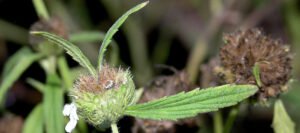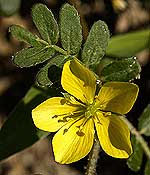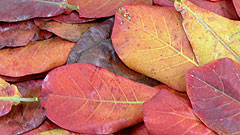
ScientificName: Lactuca virosa
Common Name: Wild Lettuce
Family: COMPOSITAE
Parts Use: Leaf, Flower and Twig.
Exploring Lactuca virosa: The Enigmatic Wild Lettuce of Traditional Lore
In the diverse world of herbaceous plants, Lactuca virosa, commonly known as Wild Lettuce, stands as a botanical of historical interest and intriguing traditional uses. Often found growing in temperate regions across Europe and North America, this leafy plant has a long-standing reputation in folk practices, particularly for its unique milky sap.
Identifying Wild Lettuce
Lactuca virosa is a biennial plant that typically grows to a height of 3-7 feet. It features prickly stems, deeply lobed leaves that often have purplish veins on the underside, and small, pale yellow flowers similar to those of its cultivated cousin, the common lettuce (Lactuca sativa). When the stem or leaves are broken, they exude a milky, white latex-like sap, which is the part of the plant most associated with its traditional properties.
A History of Traditional Use
Throughout history, various cultures have turned to Wild Lettuce for its perceived effects:
- Traditional Calming Agent: Perhaps its most prominent traditional use involves its reputation as a natural calming agent. Folk practices often employed preparations from the sap or leaves to help ease restlessness, promote relaxation, and support peaceful sleep.
- Minor Discomfort Relief: Historically, Wild Lettuce was also used in some traditional systems to help alleviate various minor aches and discomforts, though the precise mechanisms were not understood at the time.
- Traditional Herbal Preparations: The plant was often prepared as a tea, tincture, or dried extract, with the milky sap (sometimes referred to as “lactucarium” or “lettuce opium” due to its physical resemblance to opium, though chemically distinct) being the key component.
It’s crucial to understand that these are traditional uses rooted in historical folk medicine and not modern scientific medical claims.
The Science Behind the Tradition: Key Compounds
Modern scientific inquiry into Lactuca virosa has identified several compounds believed to contribute to its traditional effects:
- Lactucins and Lactucopicrins: These are the primary sesquiterpene lactones found in the milky sap (lactucarium). These compounds are responsible for the bitter taste of the plant and are the subject of ongoing research regarding their potential properties, including those related to relaxation and discomfort relief.
- Flavonoids and Coumarins: Like many plants, Wild Lettuce also contains other beneficial compounds such as flavonoids (known for antioxidant properties) and coumarins.
Research continues to delve deeper into the complex chemistry of Lactuca virosa to better understand its full range of actions.







Reviews
There are no reviews yet.